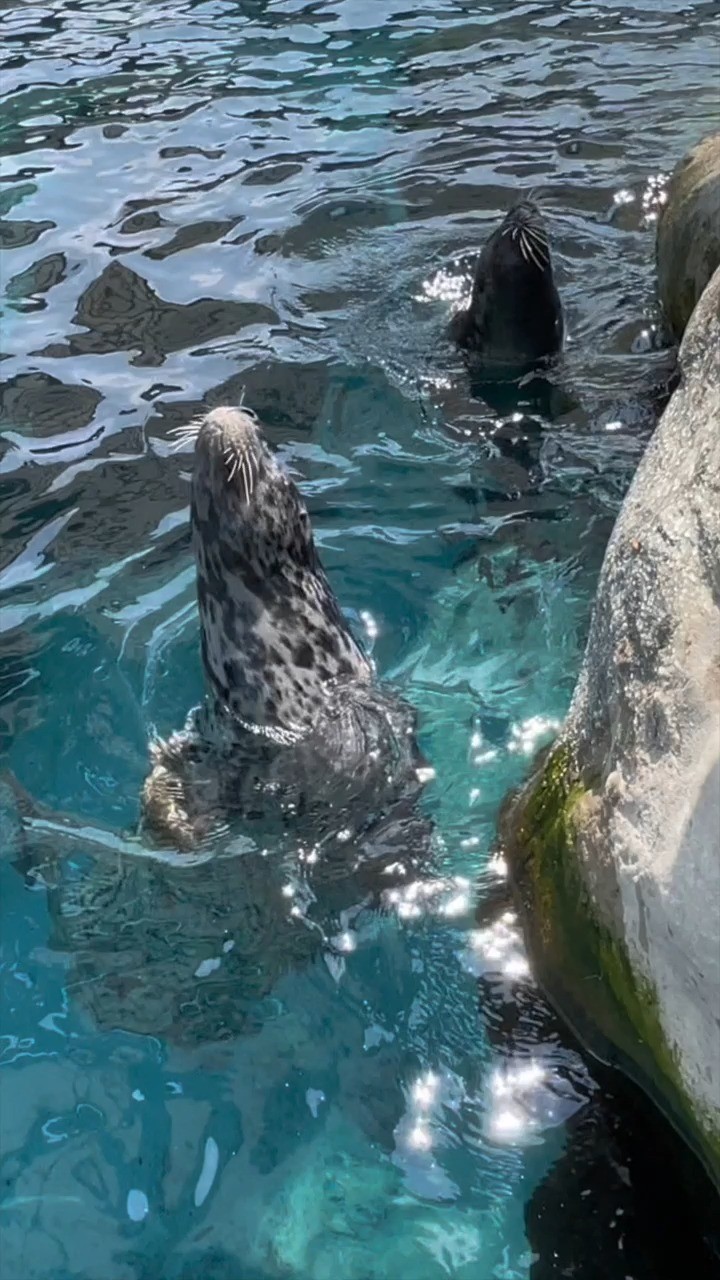- An overview of harbor seals and their behavior
- The science behind seals’ spinning movements
- The significance of animal behavior in conservation and education
- Insights into artistic swimming and seals’ potential in the sport
- The role of zoos in promoting environmental awareness through interactive exhibits
Harbor seals are a fascinating species that capture our attention with their grace and beauty. Their recent display of spinning movements, showcased in a viral video, has caught public interest, particularly due to the timeliness with the artistic swimming events in the Olympics. This demonstration not only entertains but also offers a unique educational opportunity to delve into their biology and the broader context of wildlife conservation.
Understanding Harbor Seals and Their Behavior
Harbor seals (Phoca vitulina) are known for their adaptability to various marine environments. Found in coastal waters of the northern hemisphere, these pinnipeds are characterized by their short, stocky build and distinctive spots or rings on their fur. On average, adult harbor seals weigh between 100-300 pounds and measure about 4-6 feet in length. They are opportunistic feeders, primarily consuming fish, squid, and crustaceans.
Harbor seals are known for their intelligence and curious nature. They engage in various playful behaviors, including spinning, which is both a natural expression of their athleticism and a means of interacting with their environment. These behaviors underscore the importance of understanding their ecological and social dynamics.
The Science Behind Seals’ Spinning Movements
The spinning behavior observed in harbor seals is an excellent example of their agility and coordination. From a physiological perspective, seals achieve this movement through a combination of muscle strength, streamlined bodies, and adept flippers. Their streamlined shape minimizes water resistance, allowing them to maneuver swiftly and efficiently. The Blue Danube’s elegant melody complements their graceful spins, highlighting their natural fluidity.
In the context of neurological function, seals have a well-developed vestibular system that aids balance and spatial orientation. This system is crucial for their survival, enabling them to navigate through complex underwater terrains and hunt prey with precision. The spinning motion might also have a role in sensory processing, providing seals with an enhanced perception of their aquatic habitat.
The Significance of Animal Behavior in Conservation and Education
Animal behavior studies play a pivotal role in conservation efforts. Observing behaviors like spinning can provide insights into the health and well-being of harbor seals. For instance, frequent and vigorous play behavior is often an indicator of a healthy and unstressed individual. Conversely, a lack of engagement in such activities can signal potential health issues or environmental stressors.
Educational programs that highlight these behaviors are instrumental in raising public awareness about marine life. Zoos and aquariums act as bridges, connecting people with wildlife and fostering a greater appreciation for conservation. Interactive exhibits and live demonstrations, such as the spinning harbor seals, are effective tools in educating visitors and igniting a passion for environmental stewardship.
Insights into Artistic Swimming and Seals’ Potential in the Sport
Artistic swimming, formerly known as synchronized swimming, is a sport that blends dance, gymnastics, and swimming. Athletes perform choreographed routines that require immense skill, endurance, and precision. Observing harbor seals’ spinning capabilities naturally draws parallels to the intricate movements seen in artistic swimming.
While harbor seals will not be actual competitors in the Olympics, their display of natural spinning artistry underscores the universal appeal of fluid, synchronized movement in water. This connection can be leveraged to draw attention to the physical capabilities of marine mammals and the importance of preserving their natural habitats.
The Role of Zoos in Promoting Environmental Awareness
Zoos play a crucial role in conservation education and environmental awareness. Through carefully curated exhibits and interactive experiences, zoos provide a platform for visitors to learn about various species and their ecological significance. By witnessing behaviors like the spinning of harbor seals firsthand, visitors develop a deeper connection to these animals and a greater understanding of the challenges they face in the wild.
The portrayal of harbor seals engaging in artistic movements can be an impactful educational tool. It serves to illustrate the intricate relationship between animal behavior and environmental fitness. Additionally, such displays underscore the importance of maintaining healthy aquatic ecosystems where these behaviors can naturally occur.
In conclusion, the captivating performance of harbor seals spinning in tune with the Blue Danube is more than a mere spectacle. It represents the confluence of natural behavior, scientific inquiry, and conservation education. Observing these majestic creatures provides valuable insights into their biology, promotes awareness of their ecological roles, and emphasizes the importance of preserving marine environments for future generations.
By engaging with exhibits and educational content that highlight the beauty and grace of harbor seals, zoos can inspire a sense of responsibility and commitment to wildlife conservation. This interactive approach has the potential to make a lasting impact, fostering a community that values and actively participates in the stewardship of our natural world.
*****
Source Description
They’re beauty. They’re grace. They spin and spin in place. 🥇 Our harbor seals got hyped for artistic swimming at the Olympics and had to show off their moves – we think they’ll score some spots on the US Team for 2028!
Video: seals spin in water to the sound of Blue Danube.


